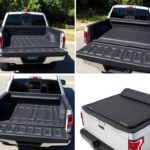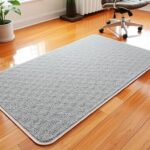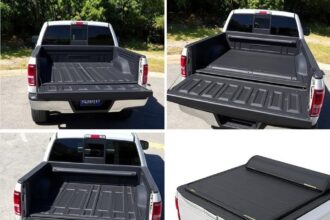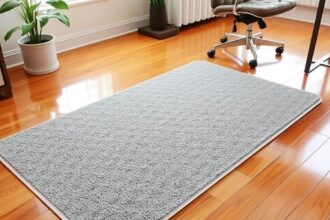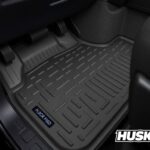Wood Fillers for Hardwood Floors: Did you know a hardwood floor can have up to a mile of cracks and gaps? This shows how crucial the right wood filler is for your floors. We’ll cover the top wood fillers for hardwood floors, including types, brands, and how to use them.
Whether it’s cracks, gaps, or damage, the right filler can transform your floors. There are many options, from durable epoxy to quick-drying latex. Each one is designed to fix different problems.
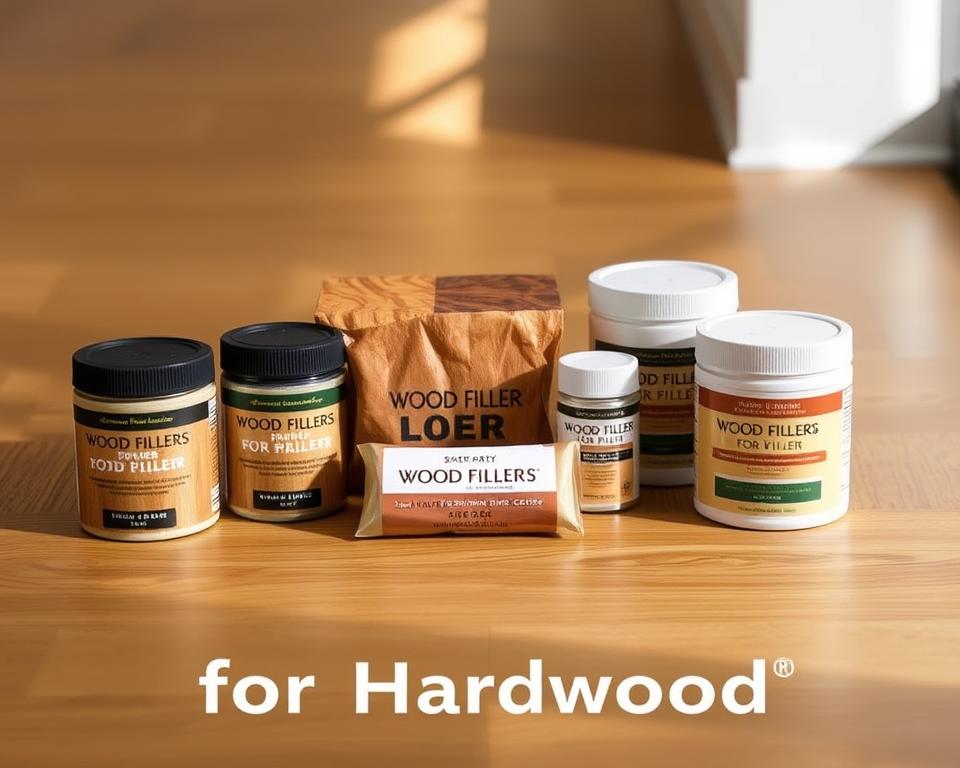
We’ll explore what wood fillers are, the different types, and the best brands. You’ll learn how to apply them for a professional look. This way, your hardwood floors will stay beautiful for many years.
What Are Wood Fillers for Hardwood Floors?
Wood fillers are key for keeping hardwood floors in top shape. They fill in cracks and gaps, making the floor look smooth again. There are two main types: putty filler and wood filler.
Putty Filler
Putty filler is perfect for small repairs. It’s made from oils, waxes, and pigments, making it soft and easy to use. You can color it to match the wood, making it great for quick fixes. But, it’s not good for refinishing because it gets wet and can’t handle sanding and staining well.
Wood Filler
Wood filler is best for bigger repairs or when you’re refinishing. It’s a mix of wood particles, resins, and binders. This lets you sand and stain it after applying. It’s great for filling big gaps or holes, blending well with the wood around it. It’s perfect for fixing a hardwood floor that’s been damaged or worn out.
Choosing between putty filler and wood filler depends on your project’s needs and the finish you want. Putty filler is good for quick fixes, while wood filler is better for bigger repairs or refinishing.
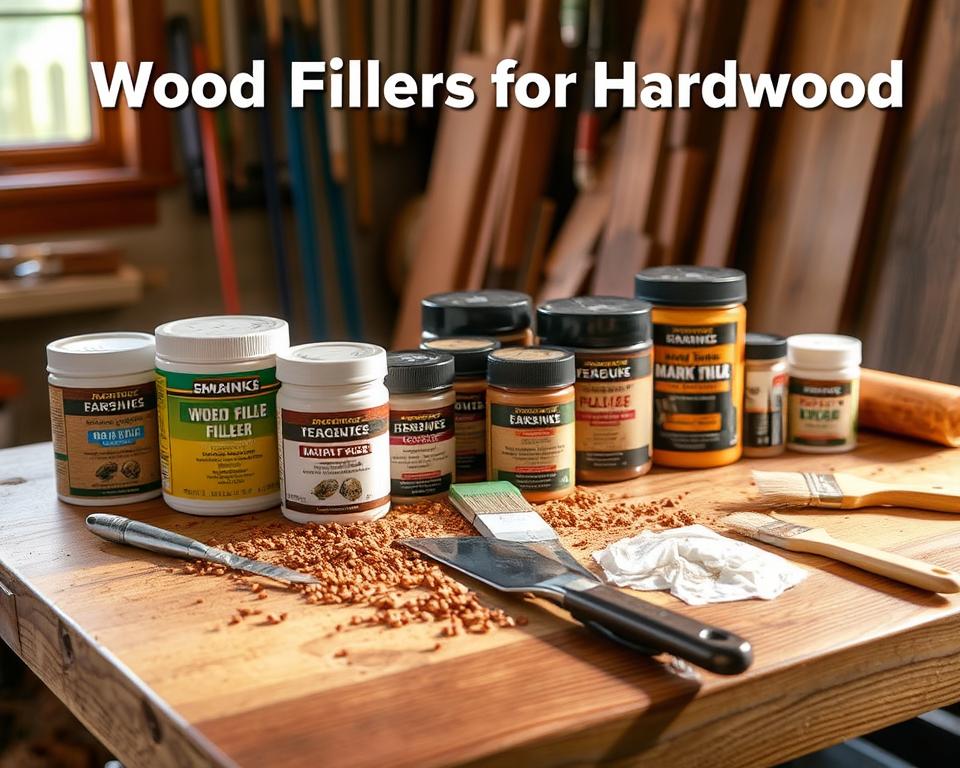
Types of Wood Fillers
There are many types of wood fillers for fixing hardwood floors. Each has its own special features and uses. Let’s look at the main ones:
Latex-Based Wood Filler
Latex-based wood fillers are a favorite for fixing hardwood floors. They are water-based, making them easy to use and clean up. They work well for small cracks and gaps.
These fillers are flexible and last long. They move with the wood without cracking or shrinking.
Epoxy Wood Filler
Epoxy wood fillers are great for big gaps and deep scratches. They are mixed together before use, creating a strong bond. This makes them perfect for areas that get a lot of use.
Cellulose-Based Wood Filler
Cellulose-based wood fillers are good for those who want something eco-friendly. They are made from wood fibers and look like real wood. They can be stained or painted to match the floor.
Wax-Based Wood Filler
Wax-based wood fillers are easy to use and can be removed if needed. They are great for small scratches, dents, and color changes. They are flexible and help keep your floors looking good.
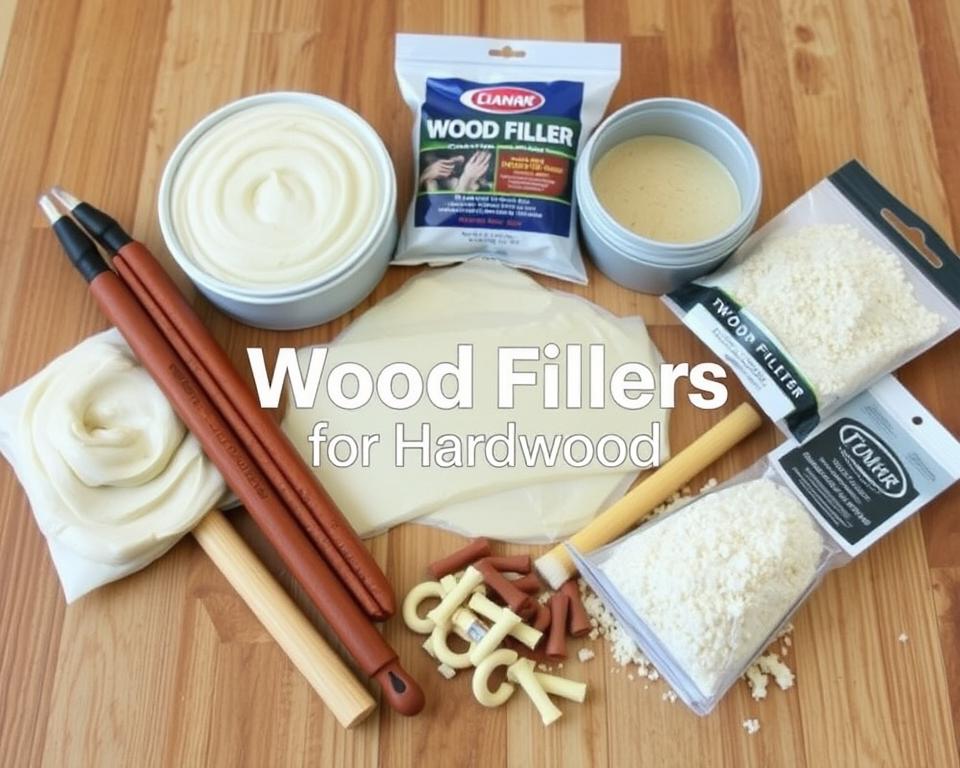
How to Fill Gaps in Hardwood Floors
Filling gaps in hardwood floors is a common task for homeowners. Seasonal changes in humidity can cause these gaps. While small gaps are normal, big ones can be a problem. Luckily, there are steps to fix and fill these gaps well.
First, check the size and depth of the gaps. For small to medium gaps, wood filler or putty works well. Larger gaps, like those in old plank floors, might need wood strips or “slivers.” You can also make a custom filler by mixing wood dust with resin to match the floor.
The steps to fill gaps in hardwood floors are:
- Clean the area around the gaps well, removing any debris or loose material.
- Choose and prepare the right filler, whether it’s a store-bought product or a homemade mix.
- Put the filler in, making sure it’s even and flush with the floor.
- Let the filler dry completely, following the instructions.
- Sand the filled area to make it smooth and level.
- Finish the floor as you like, such as staining or sealing.
If you have big damage, old floors, or complex projects, get a professional flooring contractor. They can check the situation and suggest the best solution, like filling gaps or replacing the floor.
To avoid gaps in hardwood floors, keep indoor humidity between 40% and 60% and temperatures between 60 and 80 degrees Fahrenheit. Also, make sure the wood flooring is properly installed and acclimated, and the planks are laid tightly.
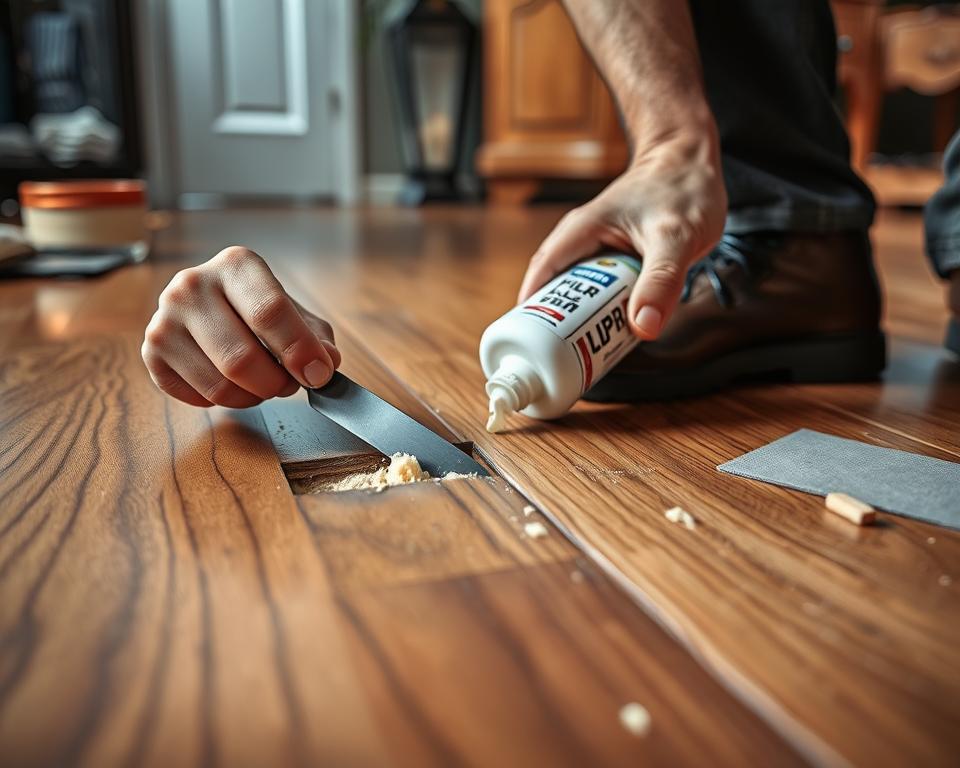
Popular Wood Filler Brands
Many top brands are trusted by pros for fixing hardwood floors. They offer reliable ways to fill cracks and gaps in your floors.
Timbermate Wood Filler
Timbermate is known for its high-quality, water-based wood filler. It’s creamy and easy to apply. Once dry, it hardens and can be sanded and stained to blend with the wood.
It’s a favorite for its durability and how well it matches the floor’s look.
Glitsa Wood Flour Cement
Glitsa specializes in a wood flour cement for hardwood floors. It blends almost invisibly with the wood. It’s great for small cracks and gaps, keeping your floors looking perfect.
Minwax Stainable Wood Filler
Minwax is a well-known name in wood care. Their Stainable Wood Filler is a hit for fixing hardwood floors. It can be stained to match the wood, ensuring a smooth finish.
It’s easy to use and works well for both DIYers and pros.
Elmer’s E914 Carpenter’s Color Change Wood Filler
Elmer’s E914 Carpenter’s Color Change Wood Filler changes color as it dries. This makes it easy to spot the filled areas. It’s great for big projects or fixing many spots on your floors.
It blends well with the wood, making it a smart choice for fixing floors without being obvious.
These brands are favorites among pros for fixing hardwood floors. When picking a wood filler, think about how easy it is to use, if it works with stains, and if it blends with your wood.
Wood Fillers for Hardwood Floors
Using wood filler on hardwood floors is key for keeping your floors looking great. It fills cracks and gaps, making your floors look seamless again. Wood fillers work well for many issues, like wear and tear, moisture damage, or temperature problems.
Wood fillers have many benefits. They dry fast, in just 20-30 minutes, making them quick to use. You can stain them to match your floor, giving a natural look. They’re also durable, lasting through lots of foot traffic.
So, why use wood filler on hardwood floors? It’s mainly for fixing splits, cracks, and gaps. These fillers make your floors look and feel better. They work on many types of flooring, including hardwood, engineered, and laminate.
| Feature | Benefit |
|---|---|
| Quick Drying Time | Wood floor filler typically dries in 20-30 minutes, ensuring a fast application process. |
| Color Matching | Fillers can be easily stained to match the color of your existing hardwood floors. |
| Durability | Wood fillers are known for their resistance to daily wear and tear, maintaining the integrity of your floors. |
| Versatility | Wood fillers can be used on hardwood, engineered, and laminate flooring. |

Choosing the right wood filler is important. There are many types, like water-based, solvent-based, epoxy, and wood dust and resin. Each has its own benefits, so pick the one that fits your needs best.
Where to Buy Wood Fillers
Fixing cracks and gaps in hardwood floors is easier with the right wood filler. You can find these products in many places, both in stores and online. Whether you want to purchase wood fillers for hardwood floors at a local store or buy wood filler online, there are lots of options.
Retail Stores that Sell Wood Filler for Hardwood Floors: Home Depot, Lowe’s, and Ace Hardware have a wide range of wood fillers. They carry brands like Timbermate, Glitsa, Minwax, and Elmer’s. Local hardware stores and flooring shops may also have wood filler.
Online Sources for Wood Filler for Hardwood Floors: Online shopping is convenient for many. Amazon, Home Depot, and Lowe’s offer a variety of wood fillers. They provide product details, reviews, and prices to help you choose.
| Retailer | Product | Price | Availability |
|---|---|---|---|
| Home Depot | Minwax Stainable Wood Filler | $6.98 | In-store and online |
| Lowe’s | Timbermate Wood Filler | $9.98 | In-store and online |
| Amazon | Elmer’s E914 Carpenter’s Color Change Wood Filler | $5.98 | Online only |
Choosing the right wood filler is key for fixing hardwood floors. With the right product, you can easily fix cracks and gaps. This will restore your floors’ beauty and strength.
Choosing the Right Wood Filler
Choosing the right wood filler is key when fixing hardwood floors. You need to think about the filler type, gap size, and finish you want. Knowing these helps ensure a repair that lasts.
There are several wood filler types. Water-based fillers are easy to use and clean up. They’re also safe for most people. Solvent-based fillers are stronger but smell more. Epoxy fillers are very durable and waterproof, great for busy areas. Wood dust and resin mixes match the floor’s color well, a favorite among pros.
The size of the gaps matters too. Small cracks can be fixed with water-based or solvent-based fillers. But, bigger gaps need something stronger like epoxy. Always follow the instructions for the best results, as drying times and application methods vary.
Think about the finish you want too. Some fillers can be stained to match the floor. Others work better for natural or painted looks. Doing a test patch first is smart to get the look right.
By considering these points, you can pick the best wood filler for your hardwood floor. Whether it’s water-based, solvent-based, epoxy, or wood dust and resin, following the instructions is key. This ensures a professional and lasting finish.
Conclusion: Wood Fillers for Hardwood Floors
Wood fillers are great for fixing cracks and gaps in hardwood floors. They come in different types, each with its own benefits. Knowing which one to use can help restore your floors to their former glory.
When using wood fillers, it’s key to keep humidity levels right. Make sure the filler works with your wood type. Always follow the instructions for the best results. Solvent-based fillers are good for big repairs and busy areas. Water-based ones dry fast and are better for the environment.
Using wood fillers can make your floors last longer and look better. By following these tips, you can fix any imperfections. This way, your floors will stay beautiful for years to come.



